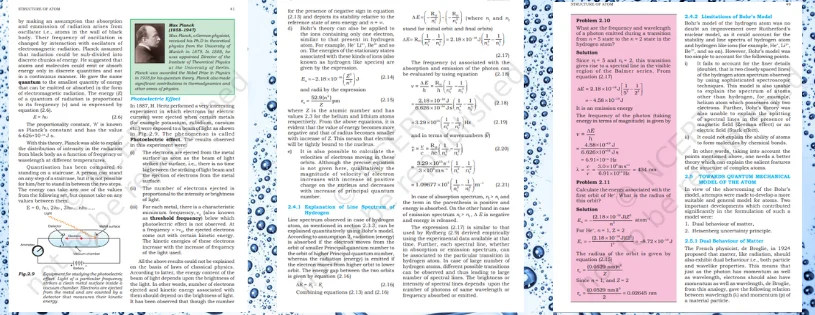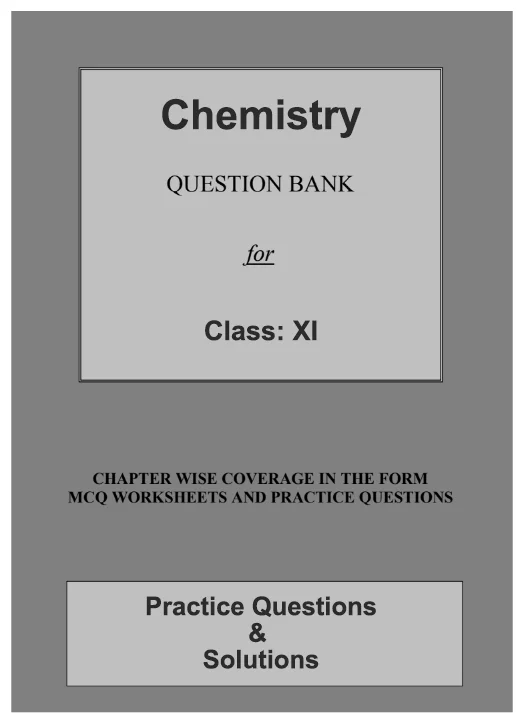In the early 20th century, scientific inquiry ventured into uncharted territory, challenging classical notions of the atomic realm. The inadequacies of Bohr's model prompted a paradigm shift, leading physicists to explore the enigmatic world through the lens of quantum mechanics. This transformative journey paved the way for the Quantum Mechanical Model of the Atom, a revolutionary framework that transcended classical limitations. As we delve into the intricacies of quantum theory, wave-particle duality, and Heisenberg's uncertainty principle, join us in unraveling the mysteries that heralded a new era in our comprehension of atomic structure. From Schrödinger's wave equation to the probabilistic nature of electron clouds, this exploration seeks to illuminate the profound shift from deterministic orbits to the probabilistic elegance that defines our contemporary understanding of the subatomic universe. Welcome to the quantum frontier, where the very fabric of reality unfolds in waves and probabilities.
Towards Quantum Mechanical Model of Atom
Towards Quantum Mechanical Model of Atom suggests a journey or progression leading to the understanding and development of the quantum mechanical model of the atom. In the context of atomic theory, it likely refers to the historical and conceptual evolution from earlier models, such as Bohr's model, to the more comprehensive and accurate framework provided by quantum mechanics. This progression involves exploring concepts like wave-particle duality, the uncertainty principle, and the Schrödinger equation, which collectively constitute the foundation of the quantum mechanical model.
What is the Quantum Mechanical Model of Atom?
The Quantum Mechanical Model of the Atom is a theoretical framework in quantum mechanics that describes the behavior of electrons in an atom. Unlike earlier models, such as Bohr's model, which depicted electrons as particles in fixed orbits, the quantum mechanical model represents electrons as probability distributions.
Key features of the Quantum Mechanical Model:
-
Wave-Particle Duality: Electrons exhibit both particle and wave-like properties. The model embraces the idea of wave-particle duality, recognizing that electrons can behave as both particles and waves.
-
Uncertainty Principle: Proposed by Werner Heisenberg, this principle states that it is impossible to simultaneously know the precise position and momentum of a particle. This introduces an inherent uncertainty in our knowledge of a particle's properties.
-
Schrödinger's Wave Equation: Erwin Schrödinger developed a mathematical equation that describes the behavior of electrons in an atom as wave functions. Solutions to this equation yield probability distributions, indicating the likelihood of finding an electron in a particular region.
-
Quantum Numbers: These are sets of values used to describe the unique properties and energy states of electrons. They include the principal quantum number (n), azimuthal quantum number (l), magnetic quantum number (m), and spin quantum number (s).
-
Orbitals: Instead of distinct orbits, electrons are described by atomic orbitals, which are regions in space where there is a high probability of finding an electron. Orbitals are characterized by their shape, size, and orientation.
The Quantum Mechanical Model provides a more accurate and sophisticated understanding of atomic structure compared to earlier models. It has been highly successful in explaining various atomic phenomena, including the arrangement of electrons in atoms and the shapes of molecular orbitals in molecules.

Key points
-
Wave-Particle Duality:
- Electrons exhibit both wave-like and particle-like properties.
- Louis de Broglie proposed that particles, including electrons, can have both wave and particle characteristics.
-
Heisenberg Uncertainty Principle:
- Formulated by Werner Heisenberg, this principle states that it's impossible to simultaneously and precisely know both the position and momentum of a particle.
-
Quantum Numbers:
- Principal Quantum Number (n): Describes the energy level of an electron and the size of the orbital.
- Angular Momentum Quantum Number (l): Defines the shape of the orbital.
- Magnetic Quantum Number (m): Specifies the orientation of an orbital in space.
- Spin Quantum Number (s): Describes the intrinsic spin of an electron.
-
Orbitals and Probability Clouds:
- Electrons are found in regions around the nucleus known as orbitals.
- Orbitals are represented as three-dimensional probability clouds, indicating the probable locations of electrons.
-
Schrödinger Equation:
- Developed by Erwin Schrödinger, this equation describes the behavior of electrons in an atom.
- Solutions to the Schrödinger equation are wave functions, and the square of the wave function gives the probability density of finding an electron.
-
Quantization of Energy Levels:
- Energy levels in an atom are quantized, meaning electrons can only occupy certain discrete energy levels.
- Electrons move between energy levels by absorbing or emitting quanta of energy (photons).
-
Pauli Exclusion Principle:
- Proposed by Wolfgang Pauli, this principle states that no two electrons in an atom can have the same set of four quantum numbers.
- It accounts for the observed behavior of electron arrangement in orbitals.
-
Electronic Configurations:
- The distribution of electrons in various orbitals of an atom is described by its electronic configuration.
- The filling of orbitals follows the Aufbau principle, Hund's rule, and the Pauli exclusion principle.
-
Quantum Mechanical Atom Model vs. Bohr Model:
- The Quantum Mechanical Model supersedes the Bohr Model, providing a more accurate and comprehensive description of atomic structure.
- The Quantum Mechanical Model doesn't depict electrons as moving in fixed orbits but rather as existing within probability distributions.
Understanding the Quantum Mechanical Model is crucial for comprehending the intricate nature of atomic behavior and electronic structure.
CBSE Class 11th Downloadable Resources:
|
1. CBSE Class 11th Topic Wise Summary |
View Page / Download |
|
2. CBSE Class 11th NCERT Books |
View Page / Download |
|
3. CBSE Class 11th NCERT Solutions |
View Page / Download |
|
4. CBSE Class 11th Exemplar |
View Page / Download |
|
5. CBSE Class 11th Sample Papers |
View Page / Download |
|
6. CBSE Class 11th Question Bank |
View Page / Download |
|
7. CBSE Class 11th Topic Wise Revision Notes |
View Page / Download |
|
8. CBSE Class 11th Last Minutes Preparation Resources |
View Page / Download |
|
9. CBSE Class 11th Best Reference Books |
View Page / Download |
|
10. CBSE Class 11th Formula Booklet |
View Page / Download |
Being in CBSE class 11th and considering the board examinations you must be needing resources to excel in your examinations. At TestprepKart we take great pride in providing CBSE class 11th all study resources in downloadable form for you to keep you going.
Below is the list of all CBSE class 11th Downloads available on TestprepKart for both Indian and NRI students preparing for CBSE class 11th in UAE, Oman, Qatar, Kuwait & Bahrain.
SAMPLE PRACTICE QUESTIONS OF SIGNIFICANT FIGURES:
Q1.What led to the development of the Quantum Mechanical Model of the Atom?
Answer. The shortcomings of classical models, like Bohr's, in explaining certain atomic behaviors prompted scientists to explore quantum mechanics for a more accurate representation.
Q2. How does the Quantum Mechanical Model differ from Bohr's model?
Answer. Unlike Bohr's model, the Quantum Mechanical Model doesn't depict electrons in fixed orbits. It describes electrons as existing in probability distributions known as orbitals.
Q3.What is wave-particle duality, and why is it crucial in the quantum model?
Answer. Wave-particle duality is the concept that particles, like electrons, can exhibit both wave-like and particle-like behaviors. This duality is fundamental to understanding the behavior of particles at the quantum level.
Q4. How does Schrödinger's Wave Equation contribute to the Quantum Mechanical Model?
Answer. Schrödinger's Wave Equation is a mathematical formula that describes the behavior of electrons as waves. Solutions to this equation provide probability distributions, offering insights into the likely locations of electrons.
Q5. How are electrons represented in the Quantum Mechanical Model?
Answer. Electrons are represented by atomic orbitals, which are regions in space with a high probability of finding an electron. These orbitals have specific shapes, sizes, and orientations.

| CBSE CLASS 11th Chemistry Chapters |
| Chapter 1: SOME BASIC CONCEPTS OF CHEMISTRY |
| Chapter 2 : STRUCTURE OF ATOMS |
| > Discovery of Sub-Atomic Particle |
| > Atomic Models |
| > Developments Leading to the Bohr’s Model of Atom |
| > Bohr’s Model for Hydrogen Atom |
| > Quantum Mechanical Model of Atom |
| Chapter 3: CLASSIFICATION OF ELEMENTS AND PERIODICITY IN PROPERTIES |
| Chapter 4 : CHEMICAL BONDING AND MOLECULAR STRUCTURE |
| Chapter 5 : THERMODYNAMICS |
| Chapter 6 : EQUILIBRIUM |
| Chapter 7: REDOX REACTIONS |
| Chapter 8 : ORGANIC CHEMISTRY – SOME BASIC PRINCIPLE AND TECHNIQUES |
| Chapter 9: Hydrocarbons HYDROCARBONS |
| CBSE CLASS 11 Physics Chapters |
| Chapter 1 : UNITS AND MEASUREMENTS |
| Chapter 2 : MOTION IN A STRAIGHT LINE |
| Chapter 3 : MOTION IN A PLANE |
| Chapter 4 : LAWS OF MOTION |
| Chapter 5 : WORK, ENERGY AND POWER |
| Chapter 6 : SYSTEM OF PARTICLES AND ROTATIONAL MOTION |
| Chapter 7 : GRAVITATION |
| Chapter 8: MECHANICAL PROPERTIES OF SOLIDS |
| Chapter 9: MECHANICAL PROPERTIES OF FLUIDS |
| Chapter 10: THERMAL PROPERTIES OF MATTER |
| Chapter 12: KINETIC THEORY |
| Chapter 13: OSCILLATIONS |
| Chapter 14: WAVES |
| CBSE CLASS 11 Mathematics chapter |
| Chapter 1. SETS |
| Chapter 2. RELATIONS AND FUNCTIONS |
| Chapter 3. TRIGONOMETRIC FUNCTIONS |
| Chapter 4. COMPLEX NUMBER AND QUADRATIC EQUATIONS |
| Chapter 5. LINEAR INEQUALITIES |
| Chapter 6. PERMUTATIONS AND COMBINATIONS |
| Chapter 7. BINOMIAL THEOREM |
| Chapter 8. SEQUENCES AND SERIES |
| Chapter 9. STRAIGHT LINES |
| Chapter 10. CONIC SECTIONS |
| Chapter 11. INTRODUCTION TO THREE-DIMENSIONAL GEOMETRY |
| Chapter 12. LIMITS AND DERIVATIVES |
| Chapter 13. STATISTICS |
| Chapter 14. PROBABILITY |
| Class 8 Link soon |
| Class 9 Link soon |
| Class 10 Link soon |
| Class 12 Link soon |
Leave a Reply